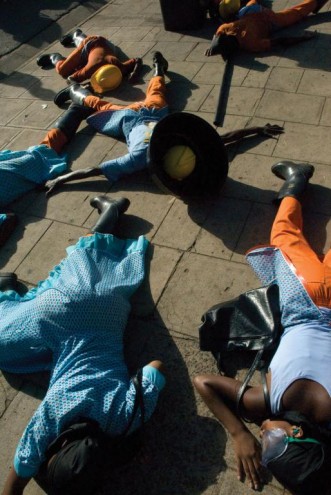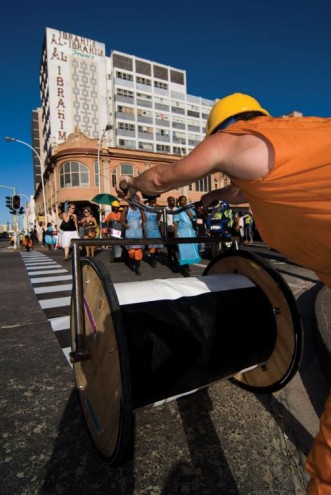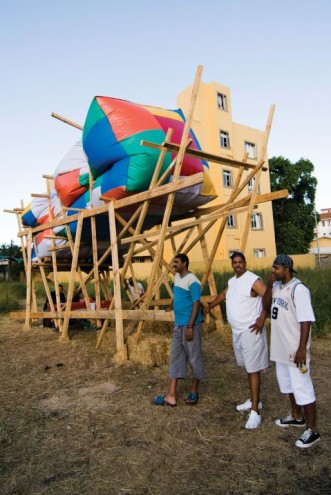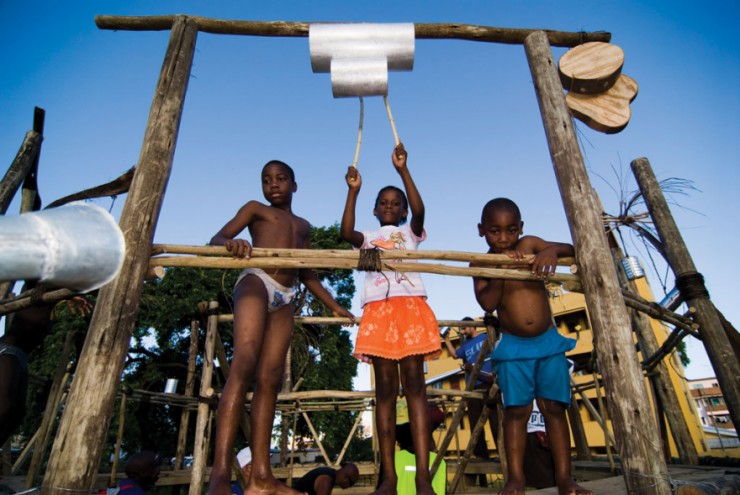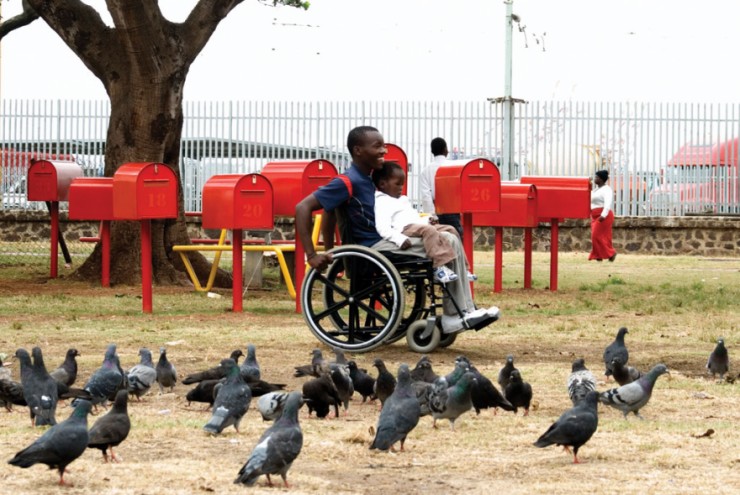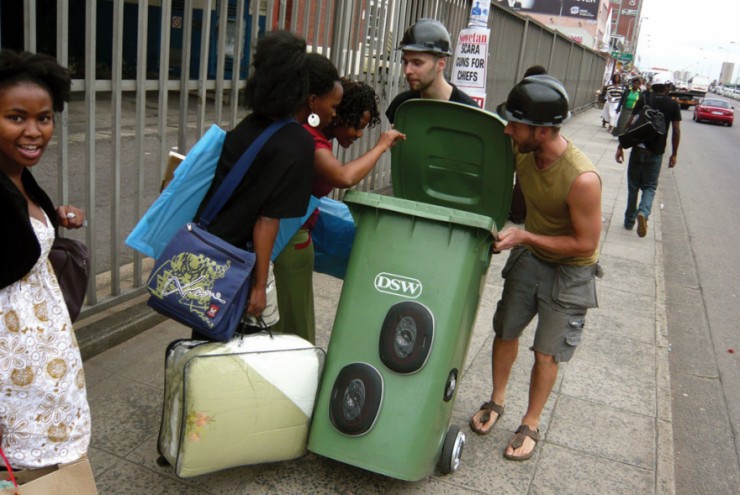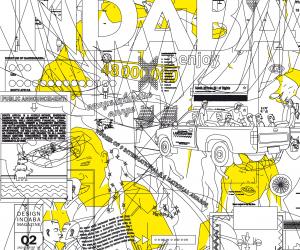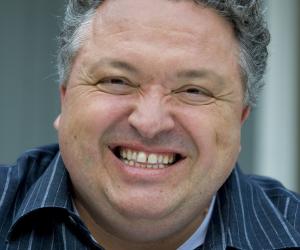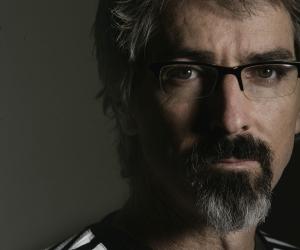First Published in
It is a few days after the Cascoland Festival 2008 Durban. A gangster drove into my rental car two days ago, I have been bitten by what appears to be a spider while clearing out a found space nestled between the N3 highway and the Warwick Triangle with an industrial lawn mower, and I have had an array of truly challenging encounters with creative egos, freewheeling communities and impetuous nine-year olds smoking tik - all making for a rather perplexed mood. Is the universe trying to tell me something? Should I resign to the interior of my vintage Mercedes and go back to the land of plush hand-woven Chinese rugs?
Maybe not the best position to be in for an upbeat retrospective look at the Cascoland Project... But I can say this much without frowning: It has been in no uncertain terms a profoundly engaging experience, highly confrontational, perhaps even life changing. Shell-shocked but not disillusioned I say!
What additives are there in standard maize?
So where to start, well, Cascoland is by definition about engaging spaces and, more importantly, engaging the public in shaping their public space. A "casco" is a Dutch term used to describe an open, modular structure or an open space in to, on to and through which basic shelter can be realised.
And it is within a Dutch context that the project was conceptualised by Roel Schoenmakers and Fiona de Bell. Durban is the last in a series of three Cascoland projects here on the southern tip of Africa. The first took place in the New Crossroads township in Cape Town in 2006 and the second in inner-city Johannesburg in 2007 - both super amazing projects that bridged many different worlds.
The Cascoland mission statement sees "public art" as an important tool in activating and developing public space. Through public art, Cascoland promotes that interdisciplinary creatives engage in communities to collaborate with audiences and community members to shape their public space by dialogue and participation. This approach where artist, architects, designers, animators, performers, city councils and communities work in dialogue with one another makes for a truly dynamic approach to activating public space and the challenges it holds, specifically in a totally wonky and extreme country such as ours.
Oh, and did I mention international? This Cascoland had participants from Lithuania, Holland, Sweden, Durban and many cross pollinations.
How big is the outside perimeter of a highway?
South Africa's urban spaces have undergone radical changes over the past decade, yup indeed. While it may be that new forms of social and economic interaction have transformed cities, they still bear the mark of racial and structural segregation. We can see these boundaries all around us. From the highways that intersect, to the fences and security cameras that mediate, and the derelict in-between spaces that separate. There exist both visible and invisible boundaries within our urban communities.
Interestingly, those who actively engage with their environment often challenge the structural and physical reality of these separations through their informal and everyday use of public space. One of the most striking examples of this can be seen in the organic formation of pathways and shortcuts created by commuters between home and work or the city, and back. In Durban we encountered numerous examples of such active urban life and took it as our cue.
Why put your foot down unless you have a Hummer?
Cascoland participant, architect and self-titled activist from Durban, Doung Anwar Jahangeer started walking these "informal routes" and discovered new forms of interaction and ways of experiencing the multiple realities of the city. His encounters enforced the realisation of new ways of engagement between spaces and the people that inhabit them, giving rise to new notions of citizenship and civic engagement made possible by the intersections in these routes. These experiences contest the paranoia regarding safety and the "politics of fear" that shape our interactions within the city. However, let me add that there are spiders and gangsters on these routes.
Cascoland Durban engaged this imaginary axis of "informal routes", starting out in the periphery township of Cato Manor, along the N3 highway, through the heart of the city and the Warwick Triangle filled with markets and transport hubs, and to the harbour area, focusing on the Umthombo Reception Centre for street children near the Bat Centre.
How do you attract attention in a slightly dazed and drunk community?
I itch to tell you about the different projects and some of the amazing inspirational characters I encountered, but highlighting a single project within Cascoland 2008 goes against the collective nature and ethos of our approach. Various creative interventions stimulated the connection between these routes, spaces and communities, ultimately culminating in a festival. The rickety festival invited audiences to join a parade from the city towards the Warwick Triangle Site where they could experience interactive sculptures and make their way to the Little Cato Manor or Umthombo Centre sites via taxis.
If your choice was the Umthombo Centre, then the Moving Hands animation team would share their latest workshop material shot in Durban. A VJ stage entertained, while the Howzit Hammock and Postbox/Lockers projects focused on the immediate needs of the street children who inhabit the space. The second location was set in the township known as Little Cato Manor where you could experience the results of several gardening projects as well as an artistic arena, which hosted a variety of performances. As in the Warwick site, there was also a Mobile Wish Photo Studio, film screenings and a super rad personalised flyer and poster campaign.
Why pimp your handbag if you can't afford a loaf of bread?
What makes this project more engaging to the general public than elite design conferences and highly curated international collaborations that grow from formal institutional engagement? One word comes to mind as key: "process". I think that Fiona de Bell, artistic director of the Cascoland project, specifically prioritises engaged and considered process.
The entire Cascoland is built around an intensive laboratory phase of more than a month in which the international team of cross-disciplinary creatives and communities can grapple with these questions, each other and the environment they are in. It is about practice and interaction, and it really opens the potential for community engagement, dents and bites.
Whether this so-called community engagement is fully achieved remains questionable. In fact I always leave these Cascoland projects feeling like there are more questions than answers. After all, a truly functional civic space needs to have the open-endedness of a blank canvas, but necessitates embedded invitations, keys or signs that capture community values and reflect the reality of the environment.
It needs to be everyone's, but someone has to take responsibility for shaping it. This may be part of the dialogue that public art inspires and certainly is what Cascoland at heart quite sincerely tries to investigate. And what do the rest of the communities really think about it? Well that's a good question, probably number 129 on the list of 5-million questions. All I know is that too much debate leads to too little action.
Design - like, as in, graphic or interior?
Cascoland approaches design not through any particular discipline but, more importantly, as a vital cultural participant. Now that's true and I dare you to try it. Within this approach, design and creativity become a problem-solving practice that may or may not manifest itself as a functional object, a communication solution, organisational strategy or even a pimped bag. Amen.
"The focus is not the world of design, but rather the design of the world," said Bruce Mau in Massive Change.
The realities of such projects are complex and if I had to be nice about it, I guess I believe that the true value lies in the considered and process-driven attempt at making connections in this disparate and crazy country. I know that Cascoland has held up a mirror, bringing me to terms with a more embracing understanding of the term community and the potential of creativity within it.
There is a very important shift within this process-driven and community-engaged approach that has not only given me a dent in my car, a spider bite and a collection of calluses, but also a renewed and expanded understanding of the world we inhabit: It is more than the sum of its parts, it's hard work and it's not about the individual.



